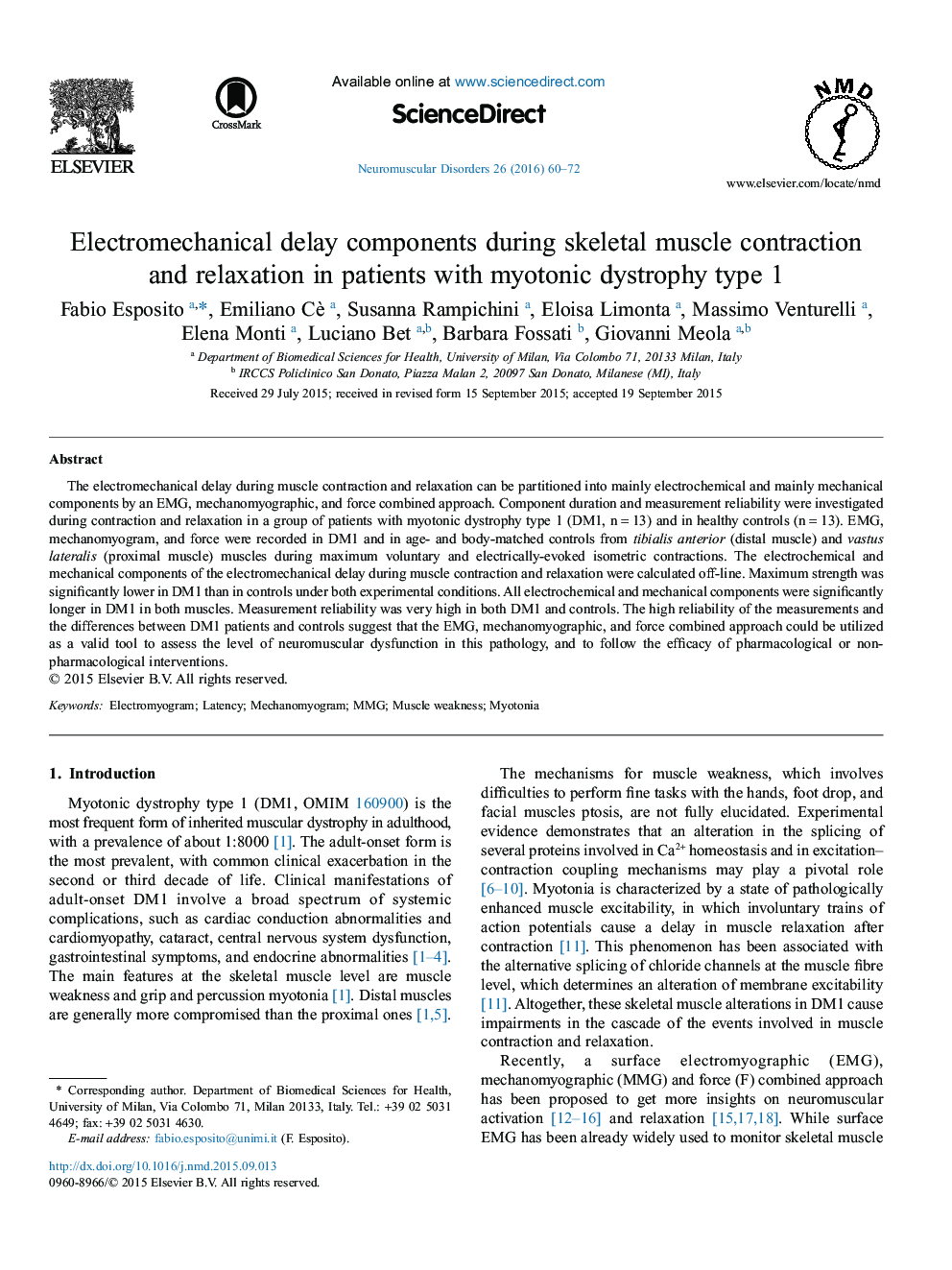| کد مقاله | کد نشریه | سال انتشار | مقاله انگلیسی | نسخه تمام متن |
|---|---|---|---|---|
| 3078849 | 1189271 | 2016 | 13 صفحه PDF | دانلود رایگان |
• Patients with myotonic dystrophy type 1 (DM1) were investigated isometrically.
• We calculated the electromechanical delays during muscle contraction and relaxation.
• Delays were partitioned into electrochemical and mechanical components.
• Measurements of reliability were very high in both patients and controls.
• Delays were longer in DM1, especially during muscle relaxation.
The electromechanical delay during muscle contraction and relaxation can be partitioned into mainly electrochemical and mainly mechanical components by an EMG, mechanomyographic, and force combined approach. Component duration and measurement reliability were investigated during contraction and relaxation in a group of patients with myotonic dystrophy type 1 (DM1, n = 13) and in healthy controls (n = 13). EMG, mechanomyogram, and force were recorded in DM1 and in age- and body-matched controls from tibialis anterior (distal muscle) and vastus lateralis (proximal muscle) muscles during maximum voluntary and electrically-evoked isometric contractions. The electrochemical and mechanical components of the electromechanical delay during muscle contraction and relaxation were calculated off-line. Maximum strength was significantly lower in DM1 than in controls under both experimental conditions. All electrochemical and mechanical components were significantly longer in DM1 in both muscles. Measurement reliability was very high in both DM1 and controls. The high reliability of the measurements and the differences between DM1 patients and controls suggest that the EMG, mechanomyographic, and force combined approach could be utilized as a valid tool to assess the level of neuromuscular dysfunction in this pathology, and to follow the efficacy of pharmacological or non-pharmacological interventions.
Journal: Neuromuscular Disorders - Volume 26, Issue 1, January 2016, Pages 60–72
